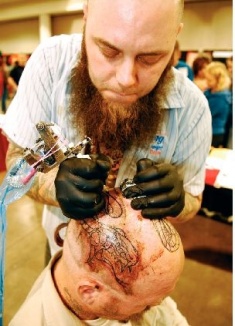Greetings cyborgs,
I came across this interesting video last week on BME Modblog. If you are unaware, the Nintendo 3DS now offers augmented reality video games. One gamer was so excited by this new technology, he got the AR card tattooed on his forearm to allow himself to become part of the game experience itself.
This exemplifies what Nathan and others have discussed on this blog many times. That is, the merging of the digital and the material and the creation of an augmented reality. So is the man in this video truly a “cyborg?” I believe so. In fact, we all are to a certain extent. Heck, you are reading this blog right now, engaging in a dialogue with me from far away through the help of internet technology. In this sense, the Nintendo DS AR card tattoo serves as an exemplary case of modification and the new cyborg body that I have spoken about before in this blog. more...



